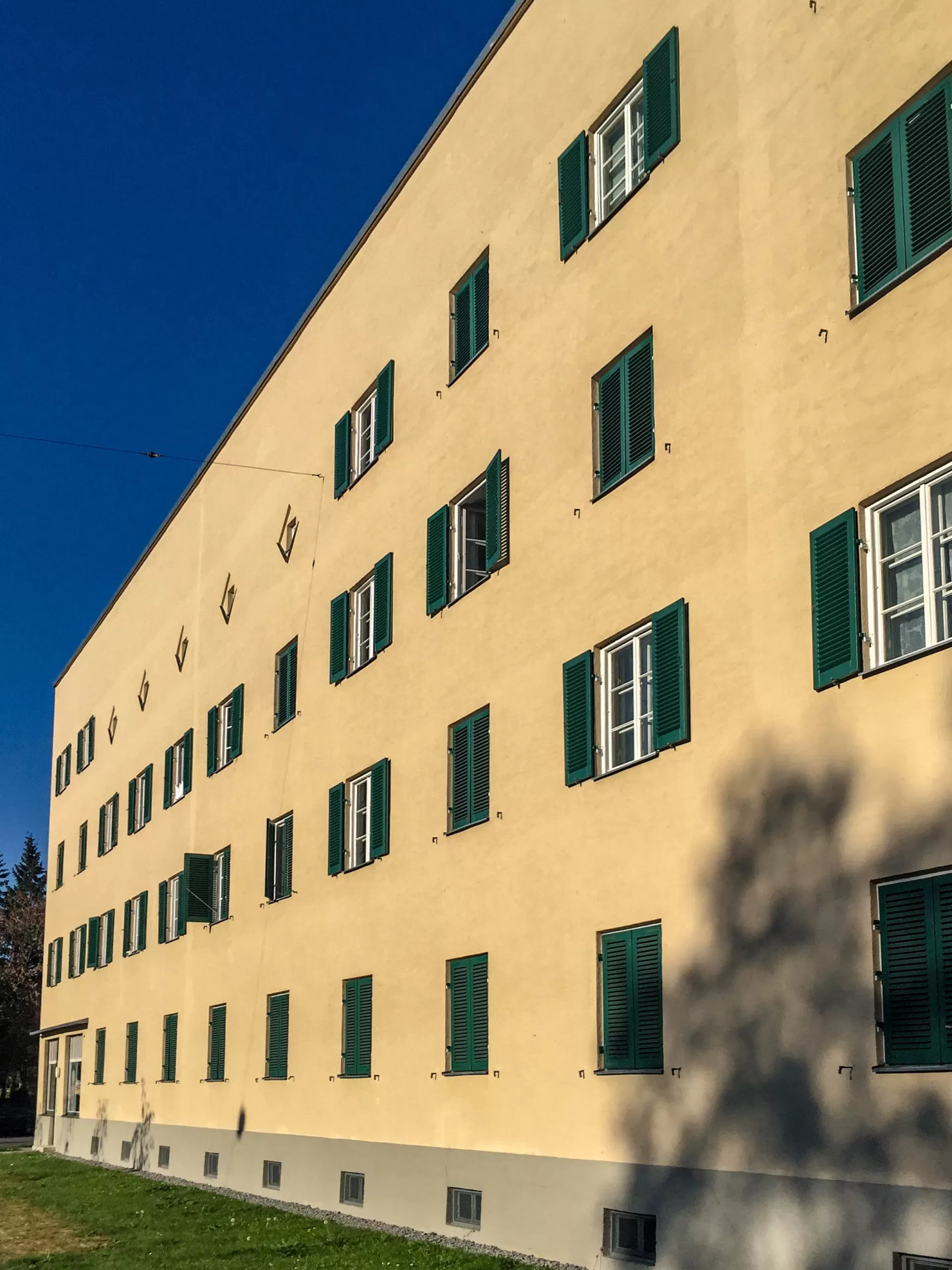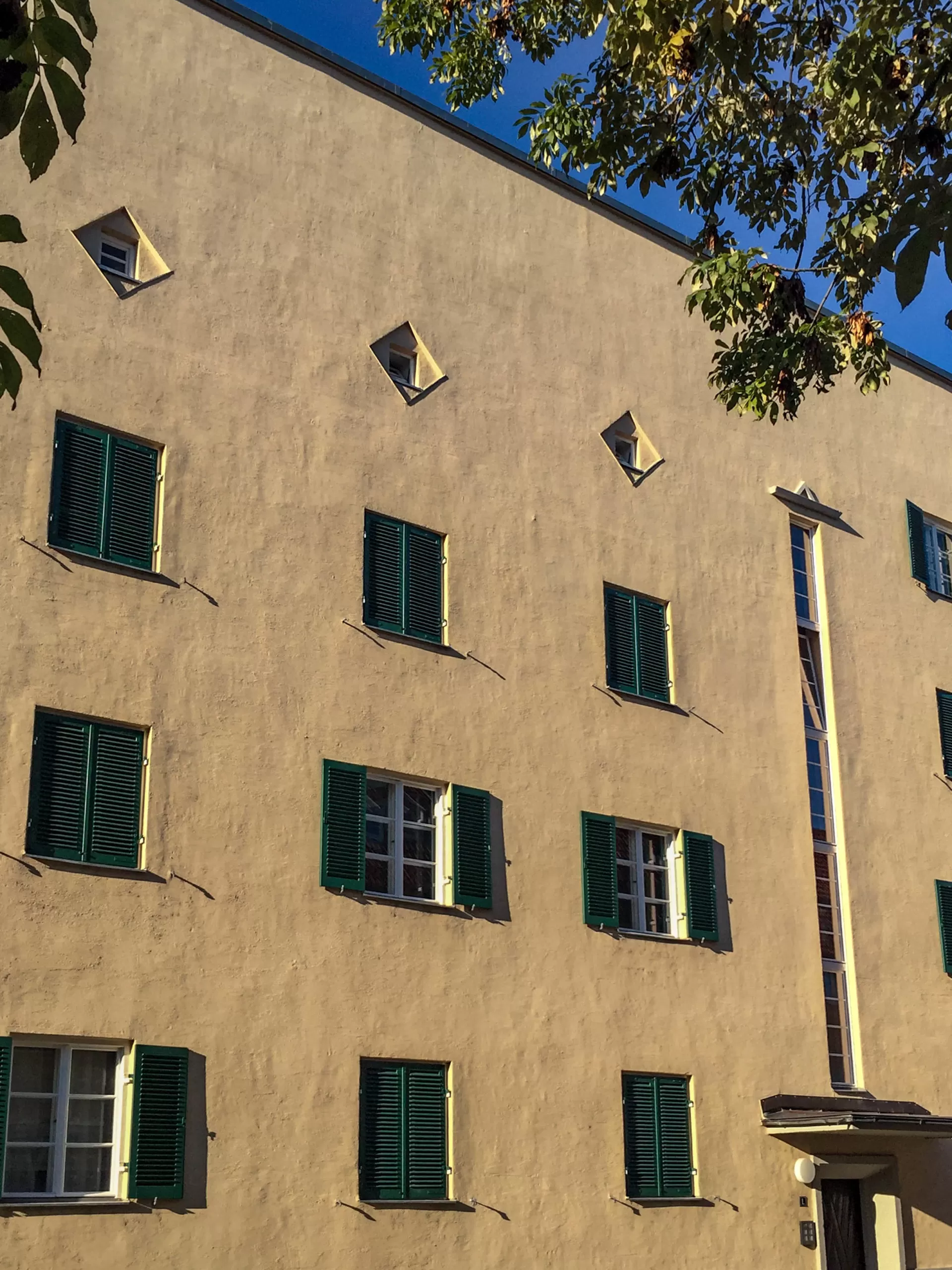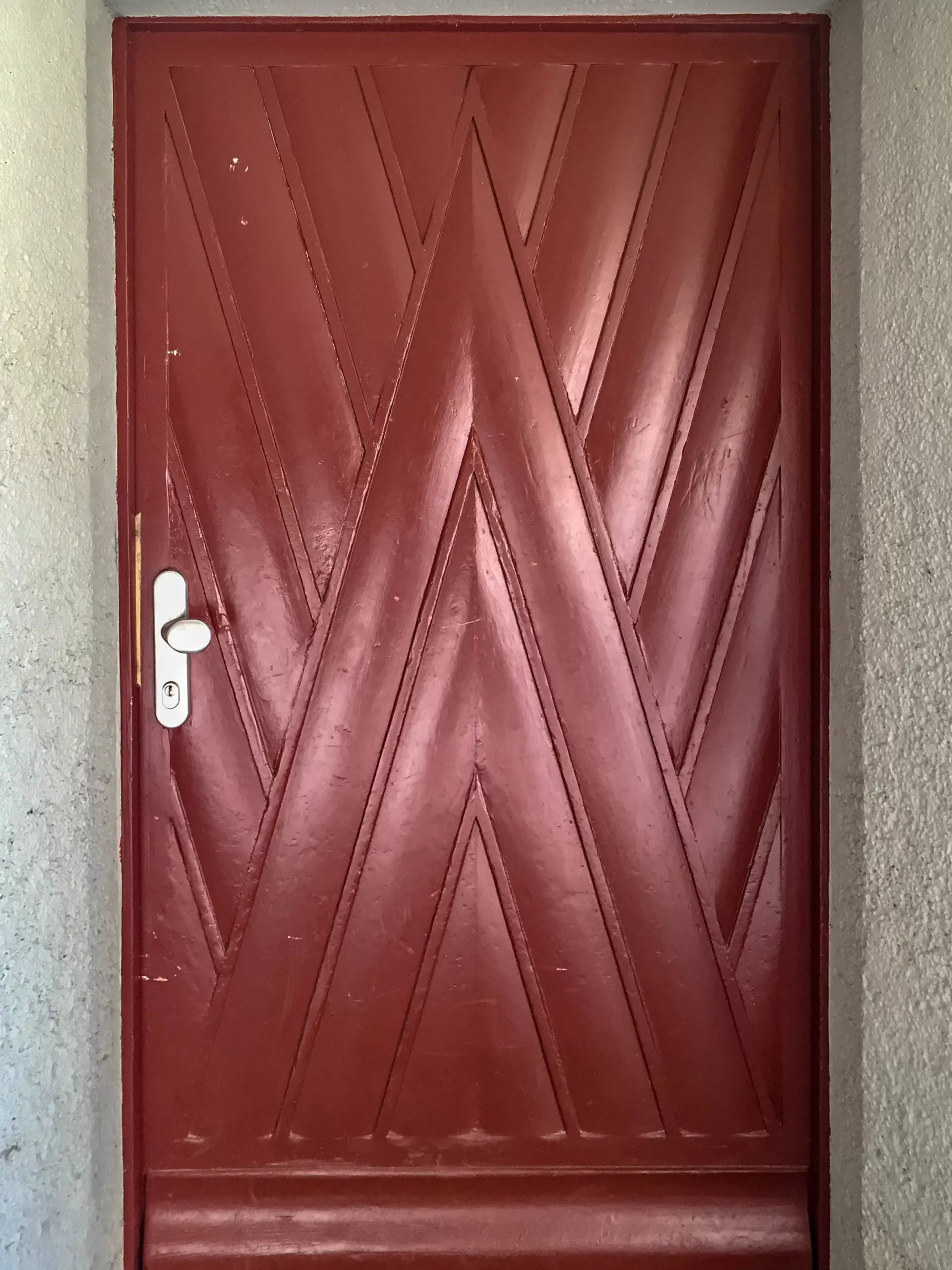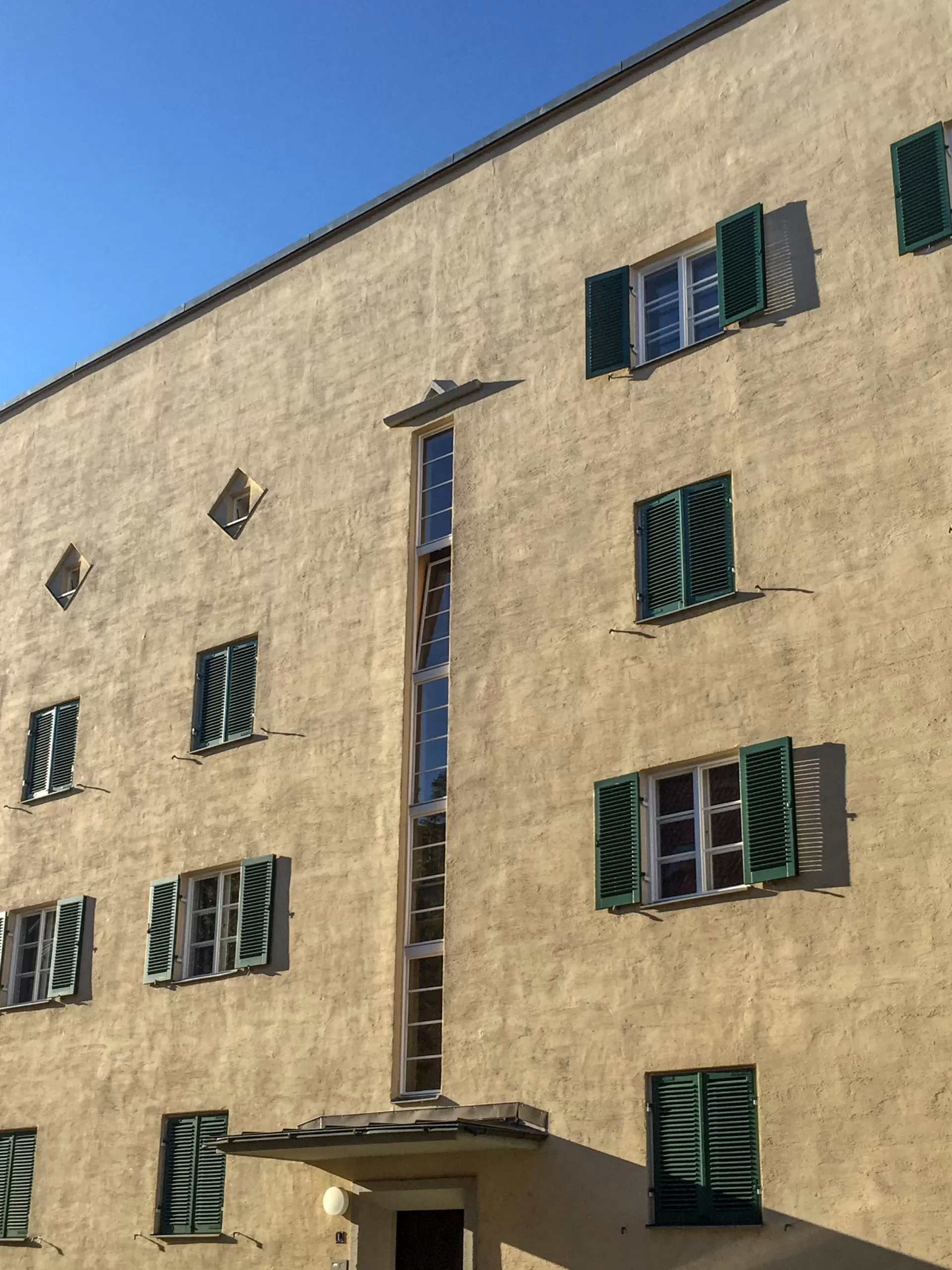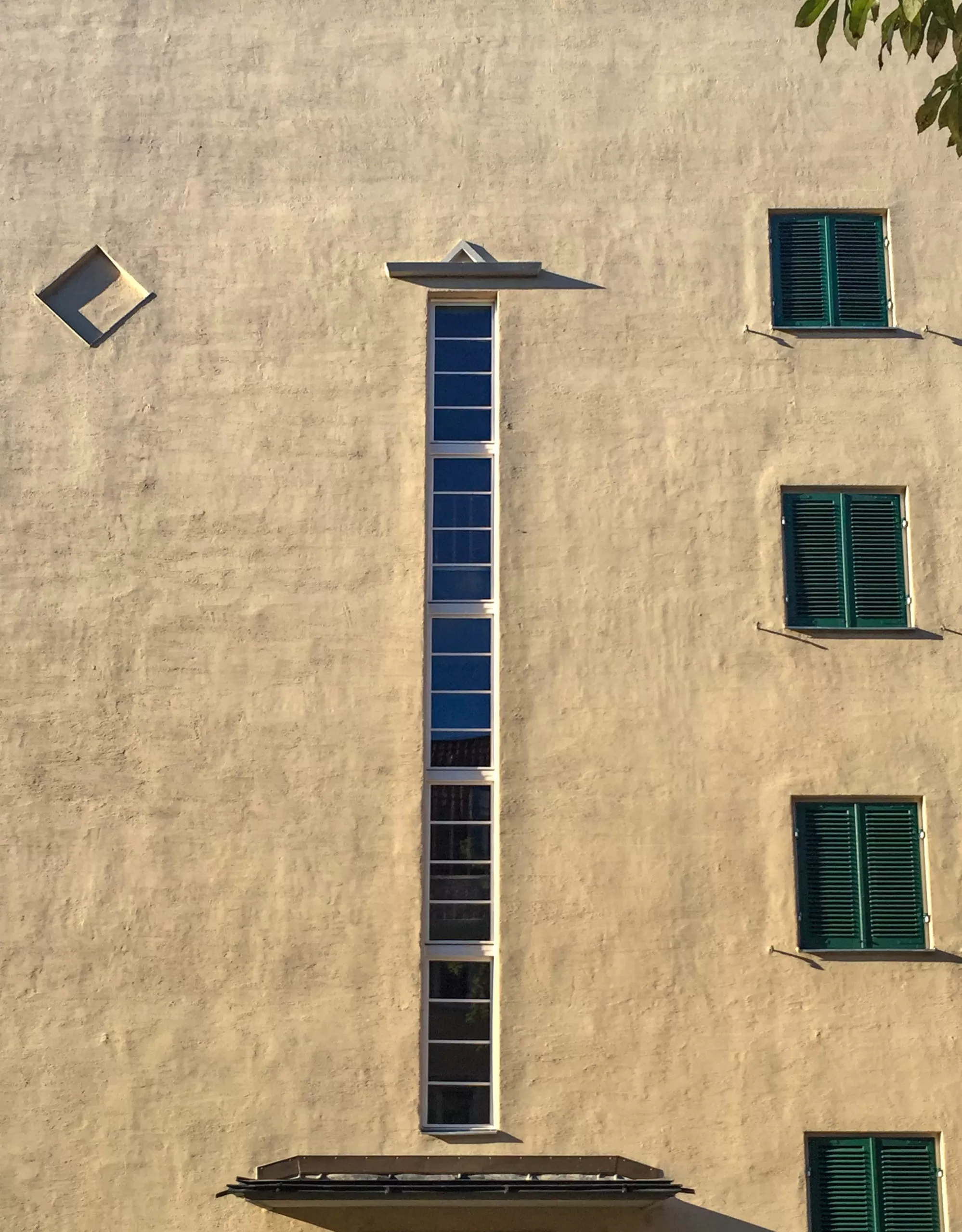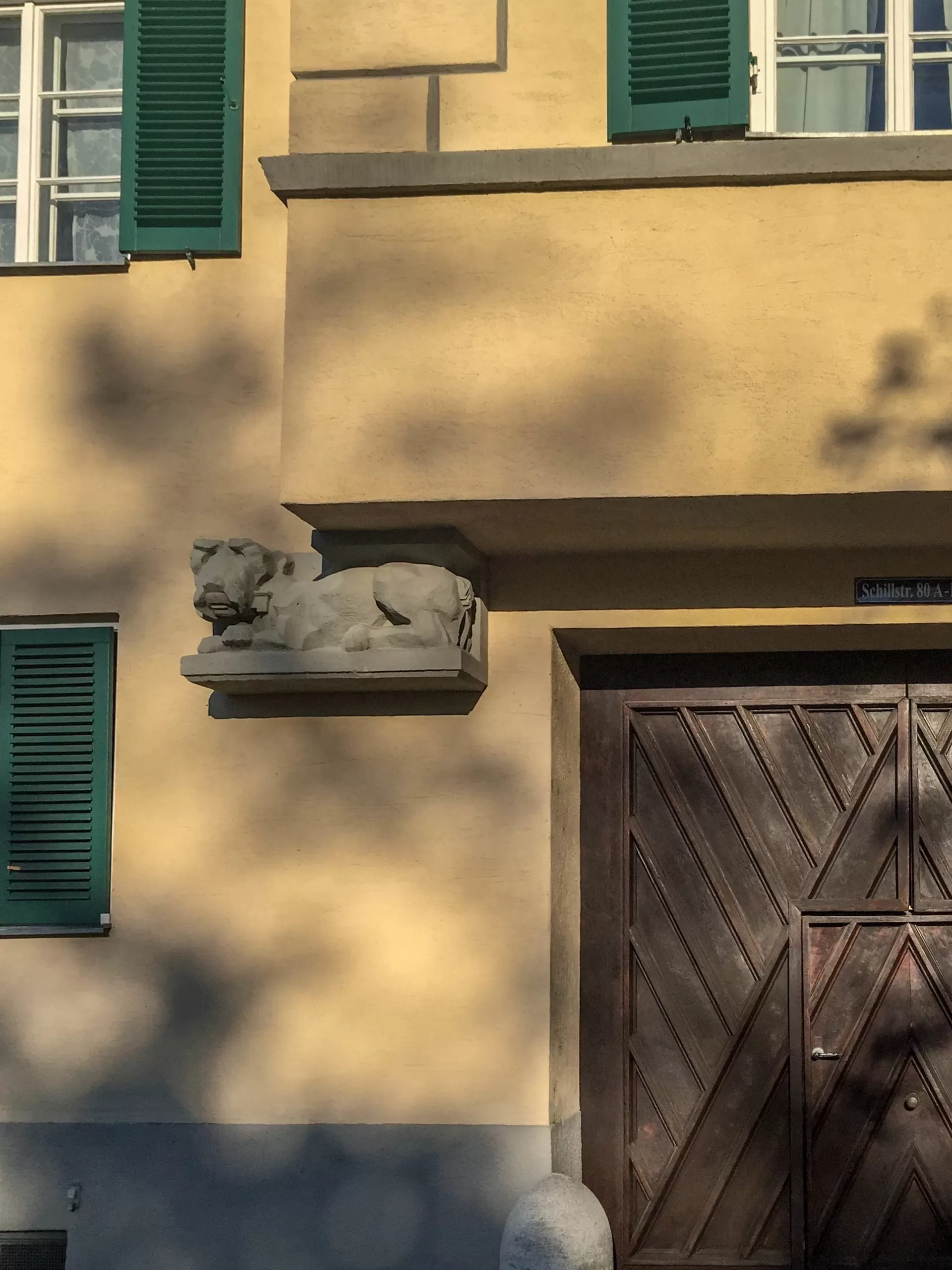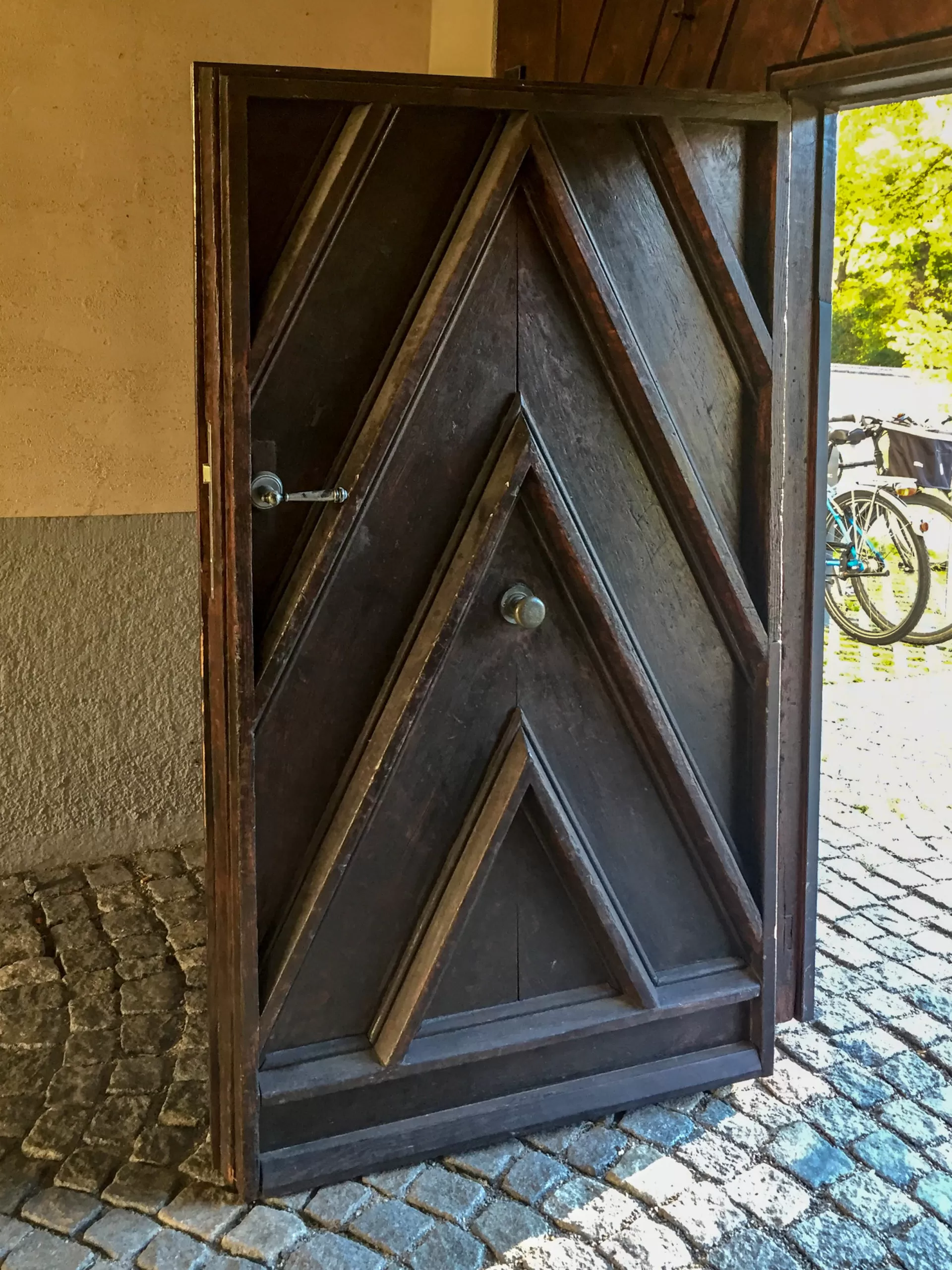1927 – 1928
Architect: Otto Holzer
Schillstraße 80a-m, Stralsunder Straße, Palmstraße, Linke Brandstraße, Augsburg-Lechhausen, Germany
The four-story square residential complex with passageways in the central axes of the east and west wings and store fixtures at the corners was built between 1927 and 1928 according to plans by Otto Holzer, the Augsburg city’s building director.
Otto Holzer was a building councilor in Fürth from 1901, city building councilor in Augsburg from 1911 and head building director from 1913.
Birkenhof
The Birkenhof was built as an auxiliary housing complex as part of the housing program for homeless and priority-seeking homeless people announced by the city of Augsburg in 1927.
The requirement was for apartments that were as simple and functional as possible, with furnishings that corresponded to the expected rental income.
The Birkenhof in the Lechhausen district comprised a total of 113 apartments ranging in size from 31 to 60 square meters.
The residential complex, which is enclosed on four sides and built as a perimeter block, has four stories throughout. The mid-axial towers of the east and west wings are elevated by a further storey.
The staircases behind the doorways located on the side wings are characterized by a long window running over three stories.
Courtyard
With its leafy, spacious inner courtyard, the Birkenhof offers usable and recreational space and thus meets the demands of twenties architecture for light and air in residential construction.
The courtyard, accessible only through the portals of the east and west wings, has an area of 1850 square meters.
Roof and Facade
The roof, which appears flat from the exterior view, turns out to be a monopitch roof from the interior courtyard view.
The façade is decorated with a single-headed eagle with outstretched wings bearing a plaque inscribed with the year of construction, 1928, as an indication of the city of Augsburg’s ownership of the building.
Renovation
The residential complex is a listed building. Between 2011 and 2013, a general renovation was carried out in accordance with the preservation order.
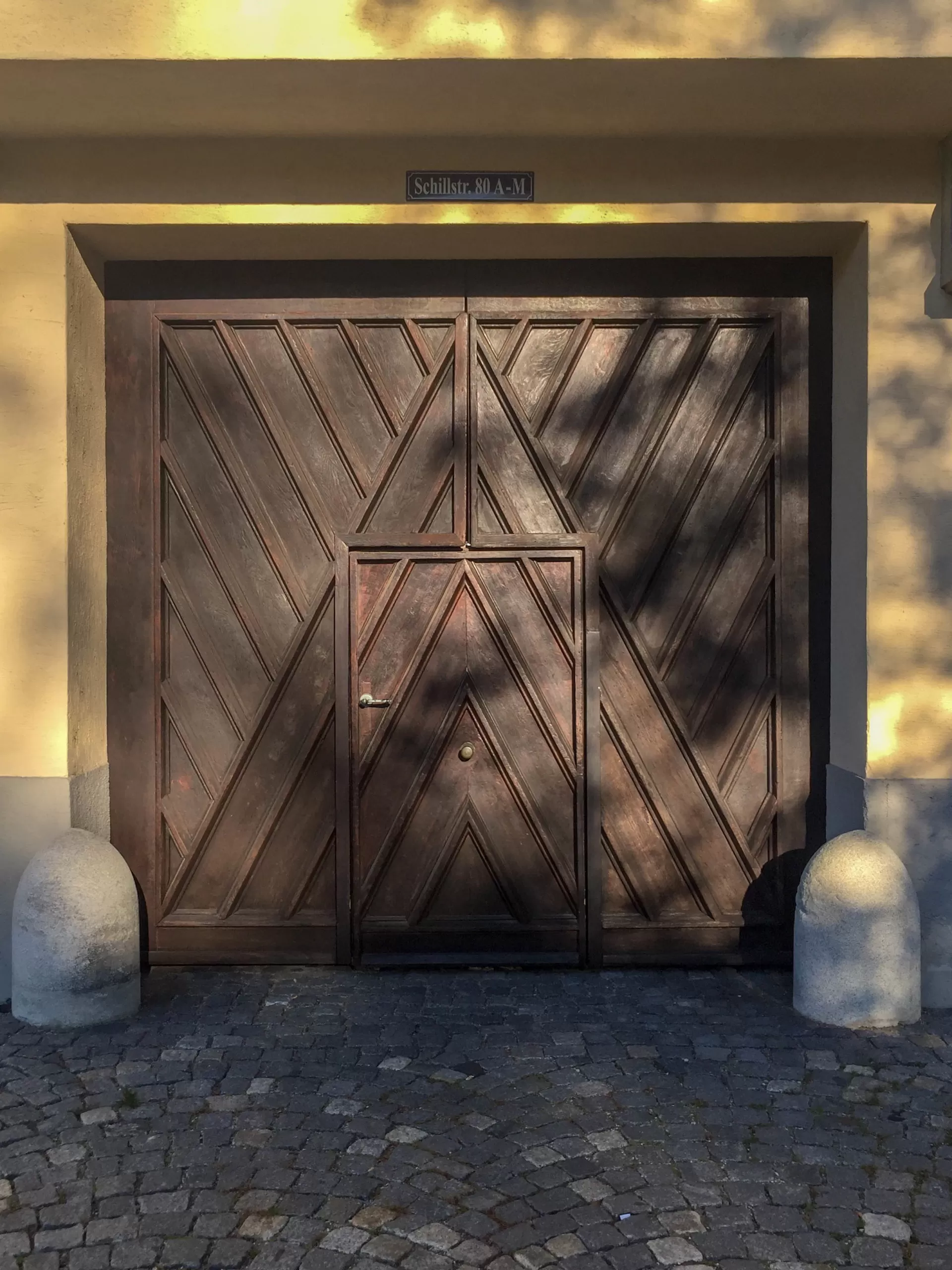
Birkenhof, 1927-1928. Architect: Otto Holzer. Photo: Daniela Christmann

